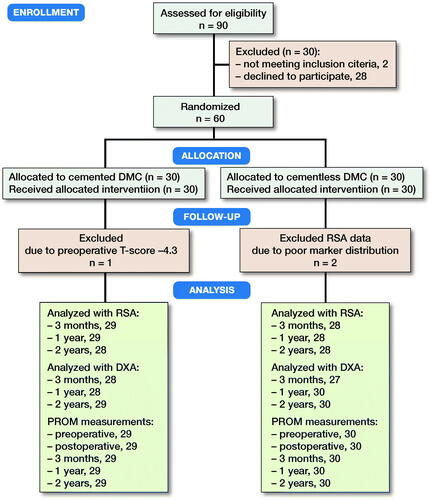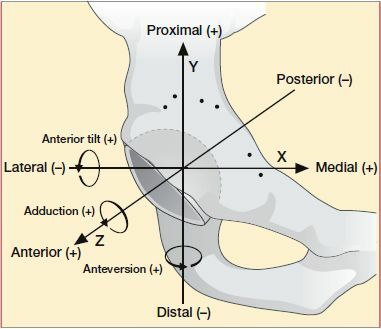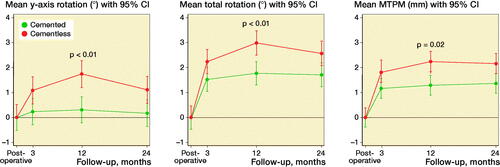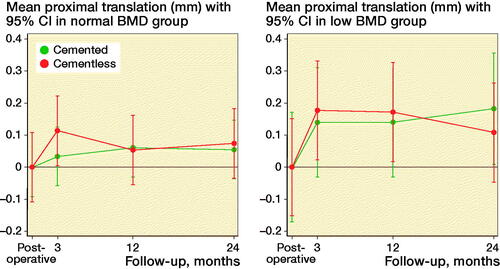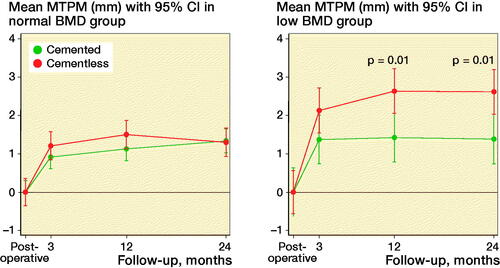Figures & data
Table 1. RSA measurement error based on double-examination stereoradiographs
Figure 3. Wilkinson regions of interest (ROI) 1–4. Only the bone areas within yellow lines are included in the analysis.
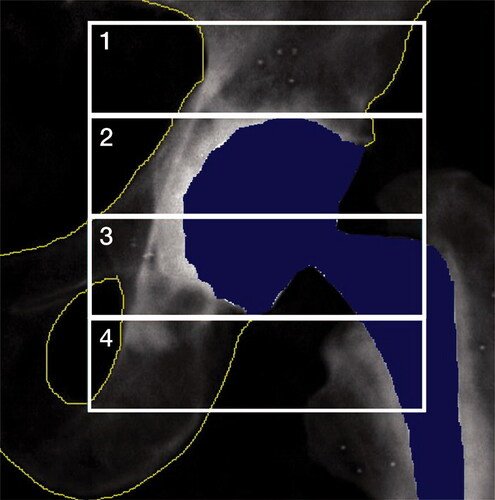
Table 2. DXA (g/cm2) measurement error based on 3-month double-examination DXA scans for cemented and cementless cup fixation
Table 3. Descriptive baseline characteristics of the patients, implants, and surgery. Values are mean (range) unless otherwise specified
Table 4. Translations along and rotations about the x-, y-, and z-axis for cemented and cementless cups presented as mean (95% CI)
Table 5. Cup rotations and MTPM between follow-ups within each cup fixation group presented as mean difference (95% CI)
Table 6. BMD change in the 4 ROIs around the acetabular component presented as mean (95% CI) percentage change from the baseline values at 3, 12, and 24 months
Table 7. Mean (SD) scores for the HHS, OHS, EQ-5D, and VAS for pain

